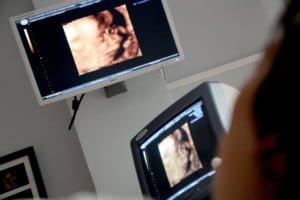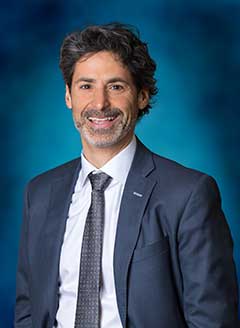
Cerebral palsy (CP) the diagnosis given to a collection of symptoms caused by an injury to the brain that impacts (among other things) muscle control. CP has many causes (including hypoxia during labour and delivery), a wide range of manifestations, and no known cure.
So, if your child has been diagnosed with CP what type of treatment will they need?
Every child is different
Because the symptoms of CP can be different in every person, treatment must be individually tailored, incorporating a series of therapies, assistive devices, medications, and sometimes even surgery to help improve physical function and raise the quality of life for the injured child.
Cerebral palsy often occurs when white matter of the brain is damaged before or during birth. This type of newborn brain injury is called hypoxic ischemic encephalopathy (HIE). Not all HIE injuries cause cerebral palsy, but it is among the most well-known causes of this type of injury. A lack of oxygen to the brain during labour and delivery one of the common causes of HIE. The lack of oxygen can happen when your baby gets stuck during delivery (shoulder dystocia), it can be caused by umbilical cord compression which prevents blood flow to the fetus’s brain, or it can happen if the mother suffers a ruptured uterus or other trauma.
About 90 percent of cerebral palsy cases result from injuries that happen before or during birth; they are known as congenital cerebral palsy.
Some cases of CP are caused by injuries that happen after the child is born. This is called acquired cerebral palsy.
Team of specialists required
No matter the cause or type of cerebral palsy, treatment requires a collaborative effort among medical specialists, therapists, family members and the patient. While outward physical symptoms may receive the most attention, internal ailments and emotional health cannot be forgotten in any treatment plan
Physical impairments — including muscle weakness or stiffness, spasms, poor motor skills, and problems swallowing or focusing — are considered the early signs of a cerebral palsy diagnosis. As such, physical therapy is the centerpiece of most treatment plans. A physical therapist can help a sufferer to control pain while improving strength, flexibility, and mobility.
Depending on the way in which CP impacts someone, the physical symptoms can have a series of related effects that can also be mitigated with physical therapy. For example, if a person struggles with chewing and swallowing, therapy can help the person eat and digest food, improving overall health and energy levels.
Related therapies can further enhance independence. Speech therapy and occupational therapy may improve communication skills and the ability to perform basic tasks that can lead to self-sufficiency and even employment.
Ongoing therapeutic treatment is just one piece of the puzzle. Other approaches include:
- Assistive devices;
- Complementary and alternative medicine;
- Medication; and
- Surgery
Assistive devices may be technological — hearing aids, communication boards and eye tracking devices, for example — or analog, including braces, orthotics, bathing benches and even adaptive sports equipment.
Complementary and alternative medicine are similar, in that they have not been fully tested or approved by Health Canada or other recognized governing bodies. They are seen as complementary when they support traditional methods, and as an alternative when they replace those methods. These treatments include massage, acupuncture, energy work, aqua-therapy, and almost any other non-traditional modality.
Medication only treats cerebral palsy symptoms and cannot reverse the brain injury. Different classes of commonly prescribed drugs target muscle control, muscle spasms, stomach discomfort, and seizures. Antidepressants may also be used to support cerebral palsy patients as they cope with the limitations brought about by their condition.
Like medication, surgery treats symptoms and not the cause of cerebral palsy. Orthopedic surgery, especially on lower extremities, is most common, but vision correction, hearing correction, and gastrointestinal relief are other goals of surgical treatment of cerebral palsy patients. An important consideration when opting for surgery is the ability to provide ongoing support to the patient during recovery and rehabilitation from any procedure.
Want more information?
If you would like more information about birth injury claims, contact us for a free copy of Birth Injury Lawsuits: A Parent’s Guide. The book is the only guide written specifically for Canadian parents of children who have suffered birth-related injuries. The book is for sale on Amazon but you can get a copy at no charge by contacting us through our website.

Toronto birth injury lawyer Charles Gluckstein was appointed President of the Ontario Trial Lawyers’ Association from 2013-2014. Since 2014, Best Lawyers® International has consistently recognized him as a leader in the personal injury field. In 2014 he was awarded the LEXPERT Zenith Award for Leading Personal Injury Lawyer in Practice Excellence, in recognition of thought leadership and the setting of new standards for the Personal Injury Bar. In its annual publication, the Canadian Legal LEXPERT® Directory has listed Charles as being repeatedly recommended by his peers in the area of personal injury for the Toronto region.
